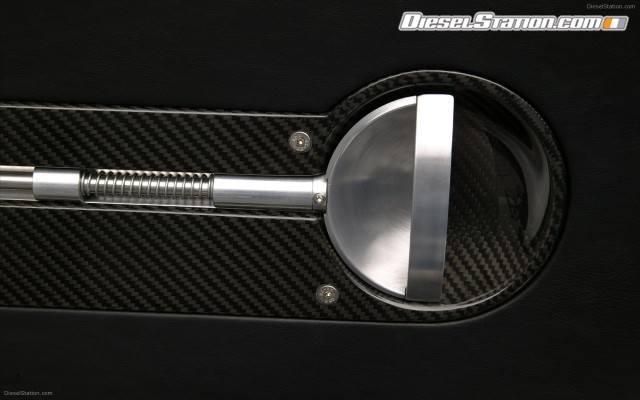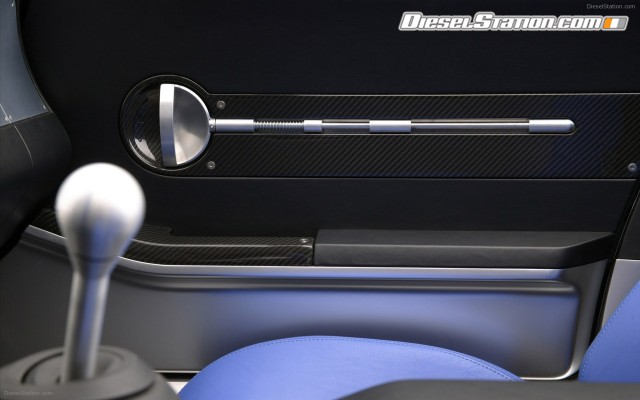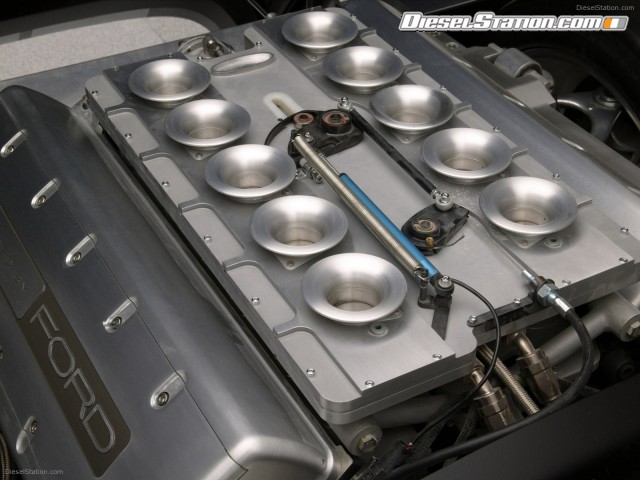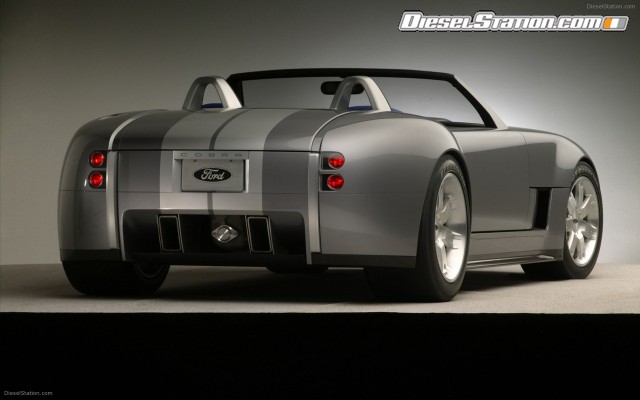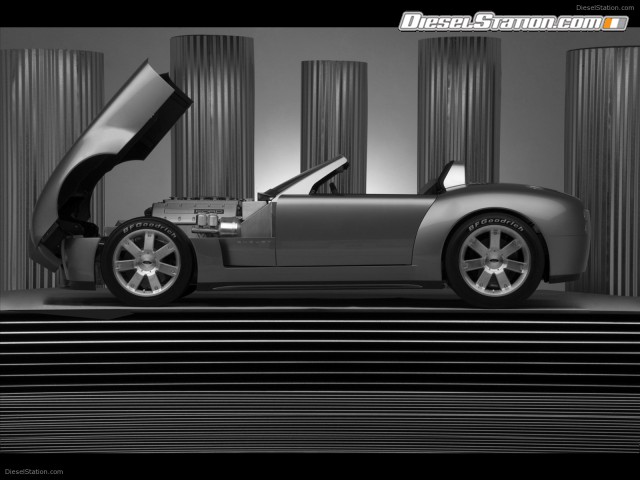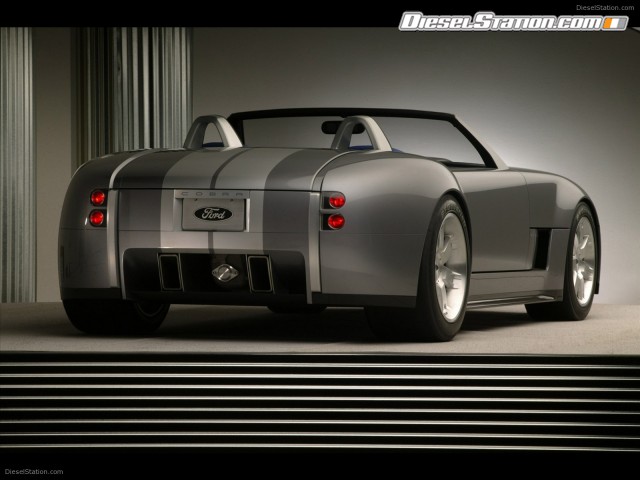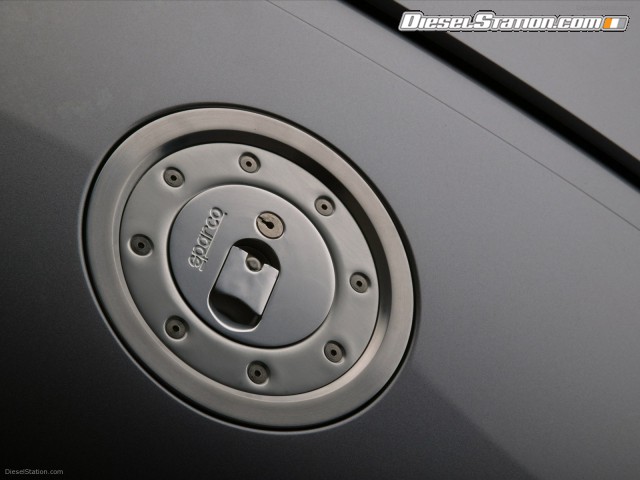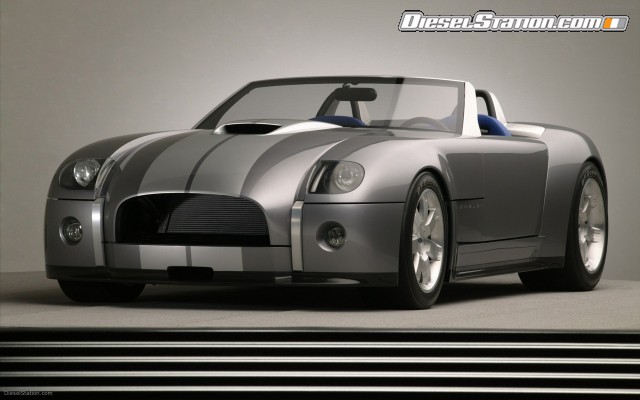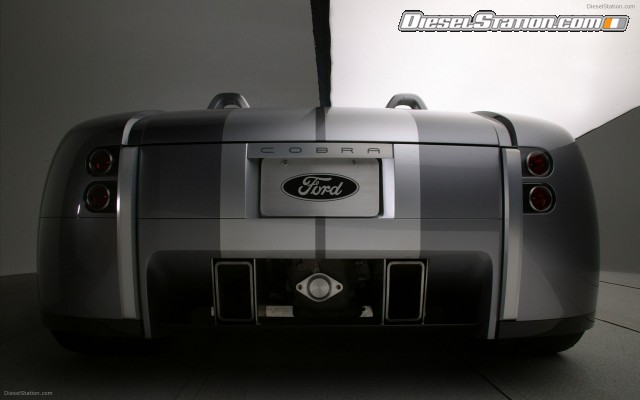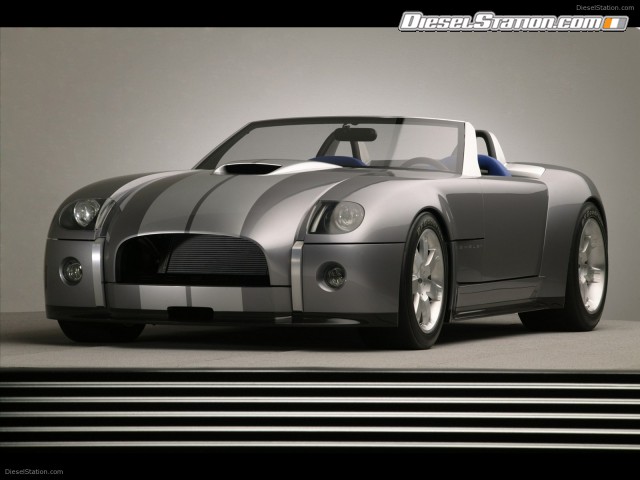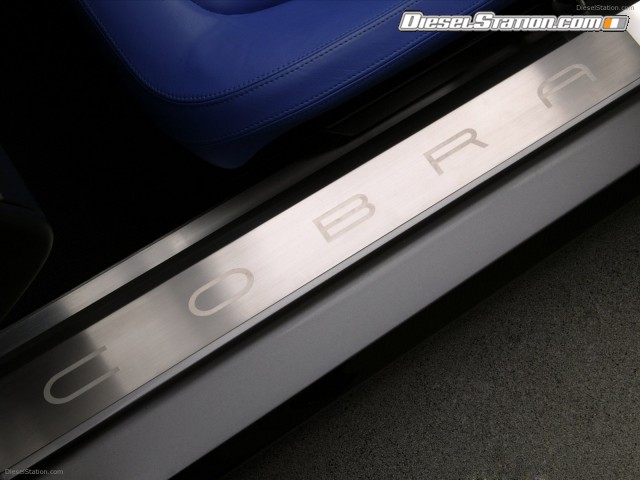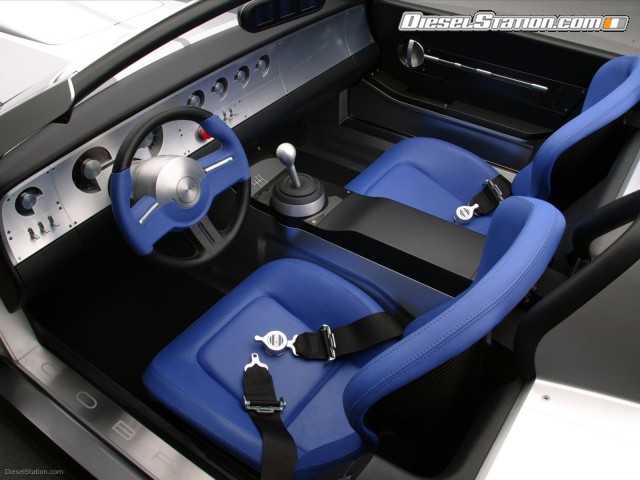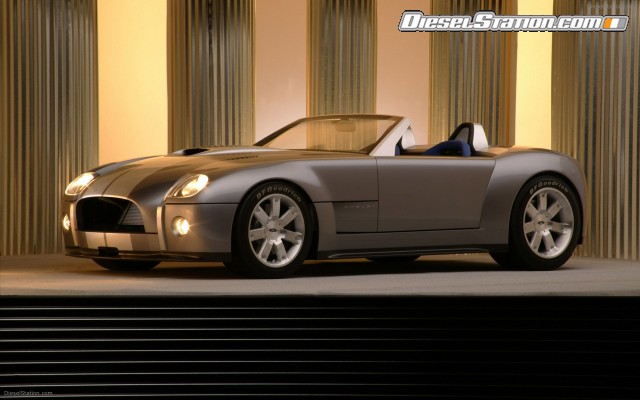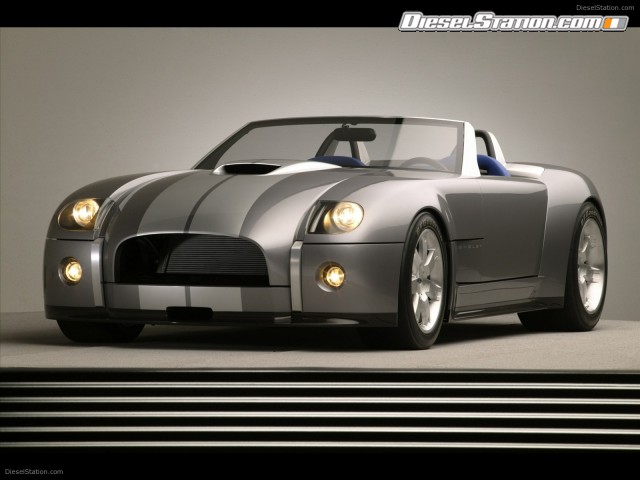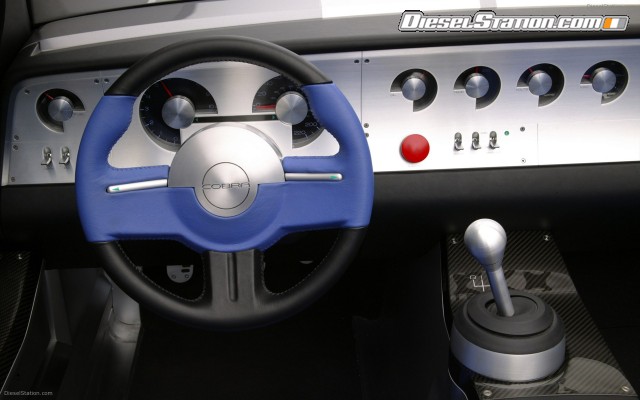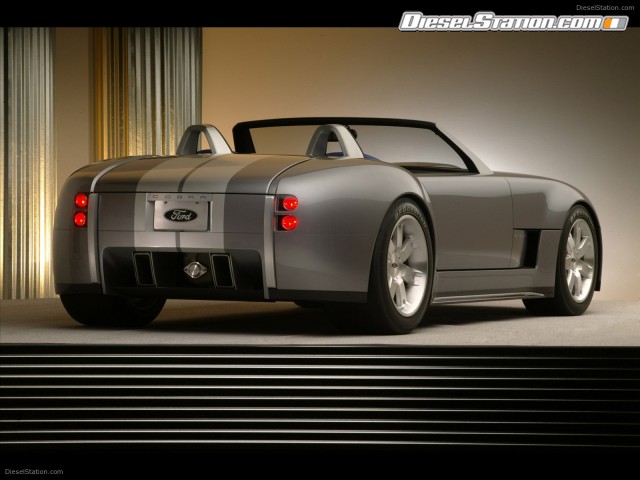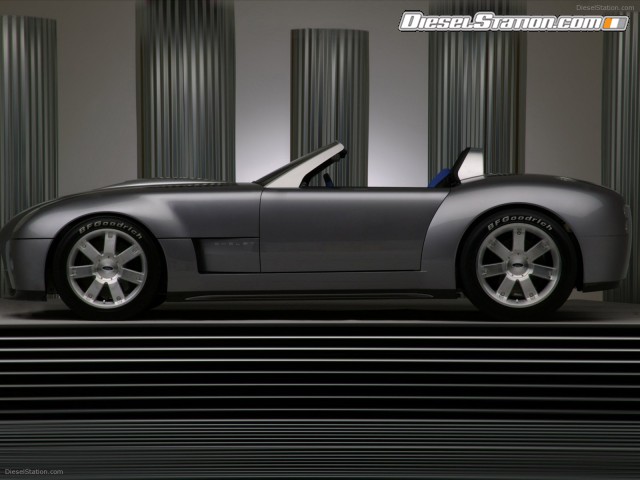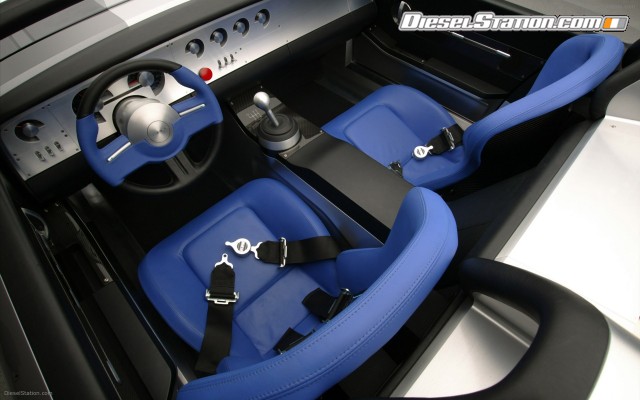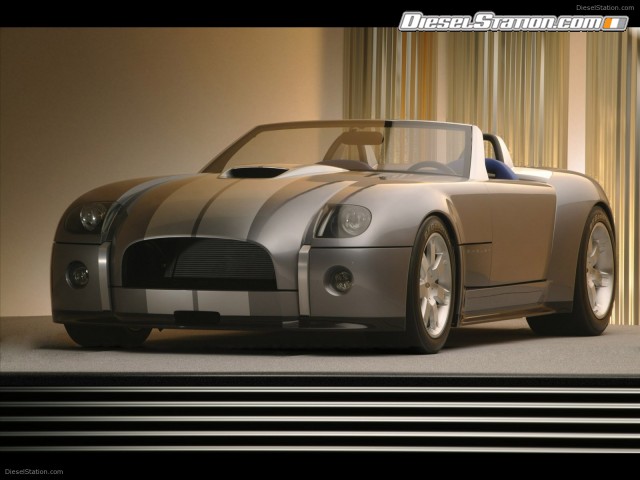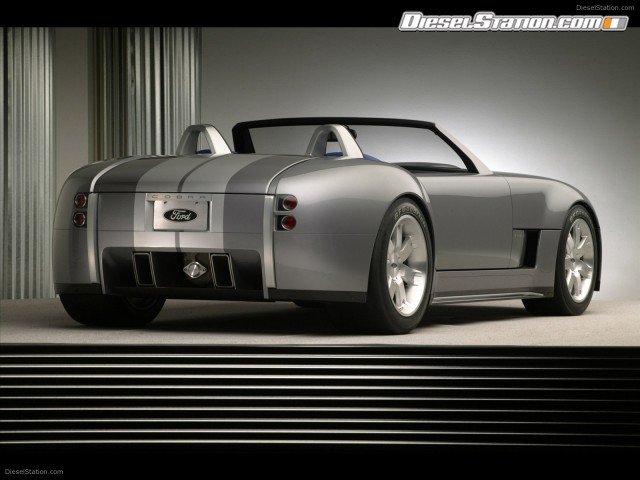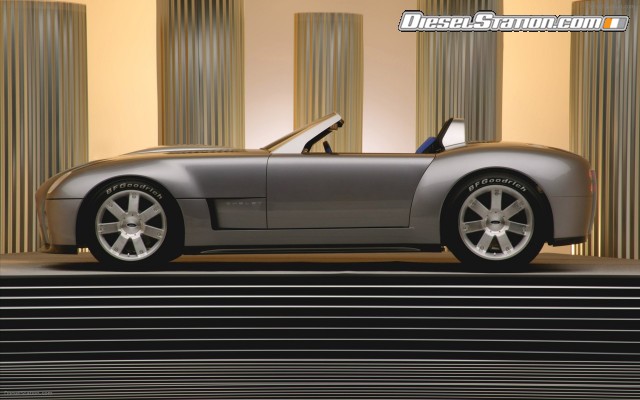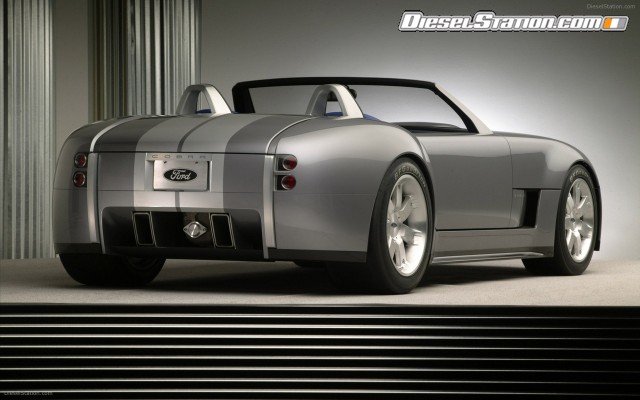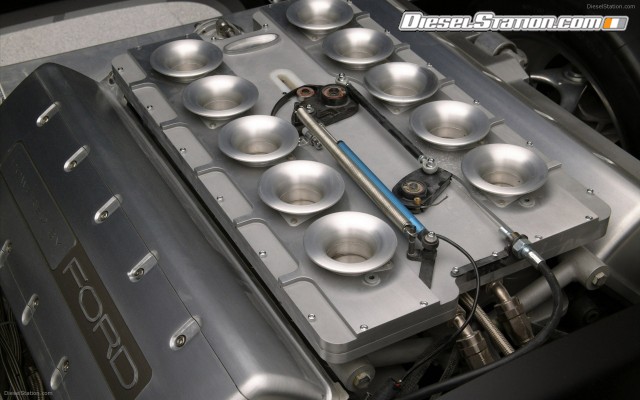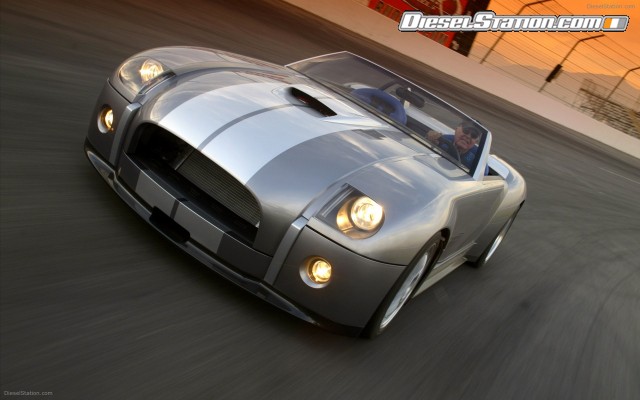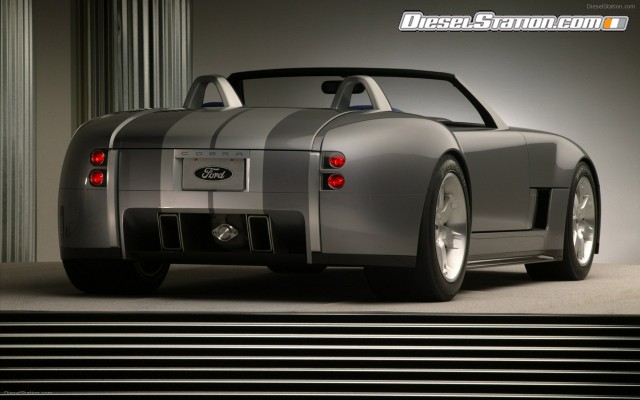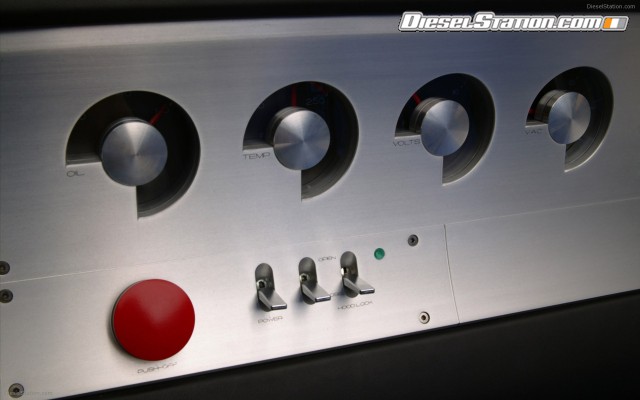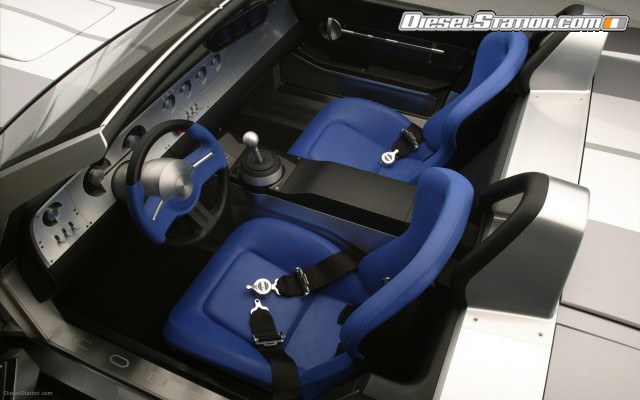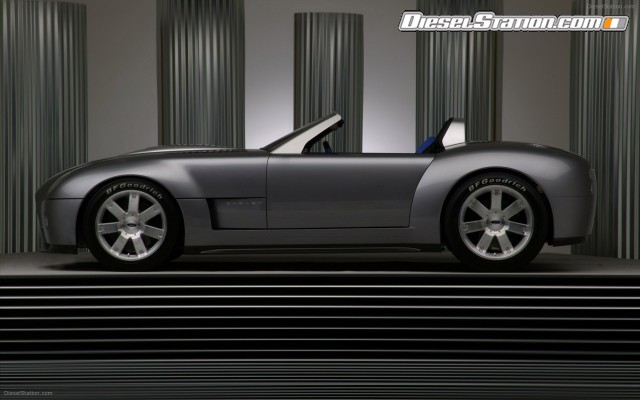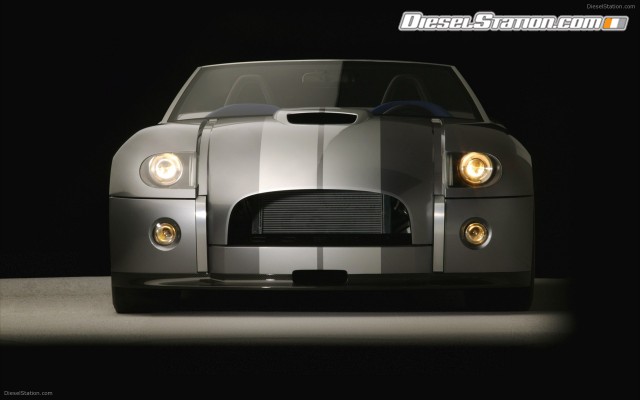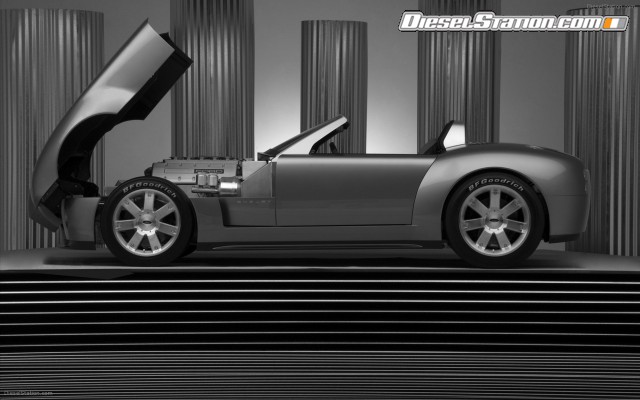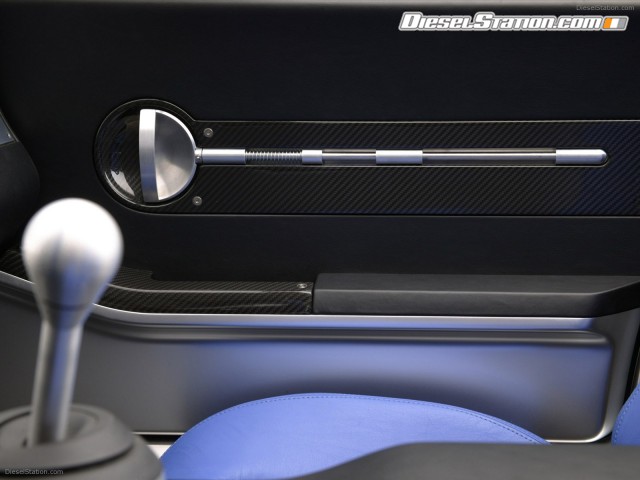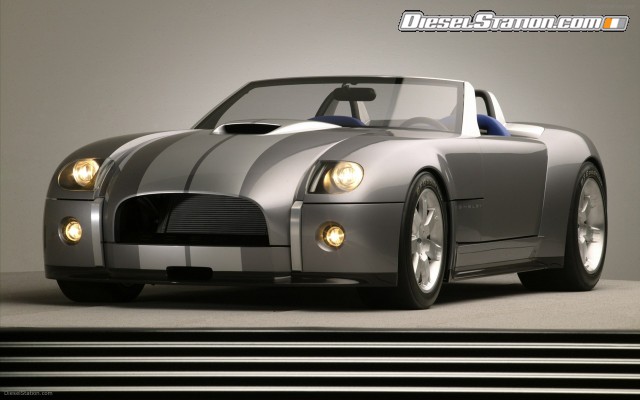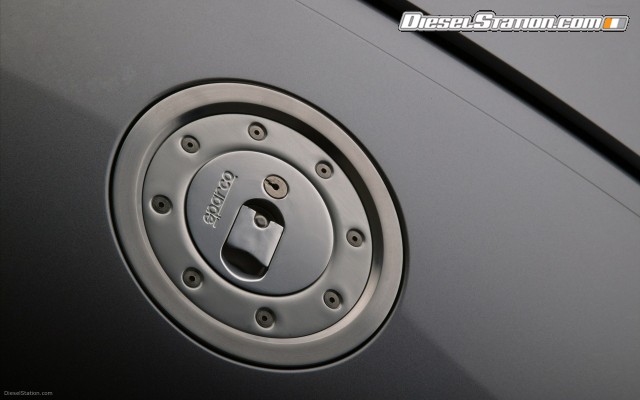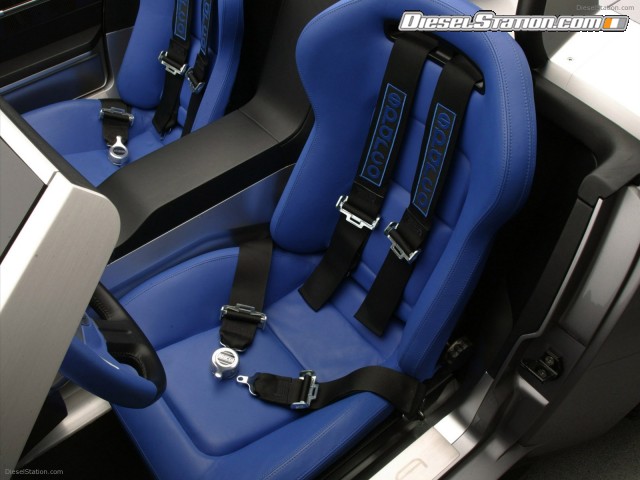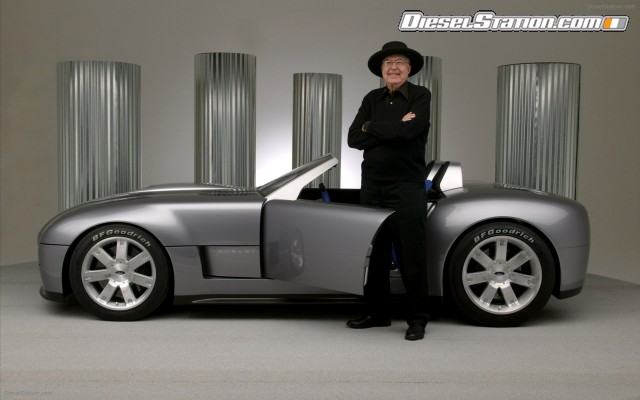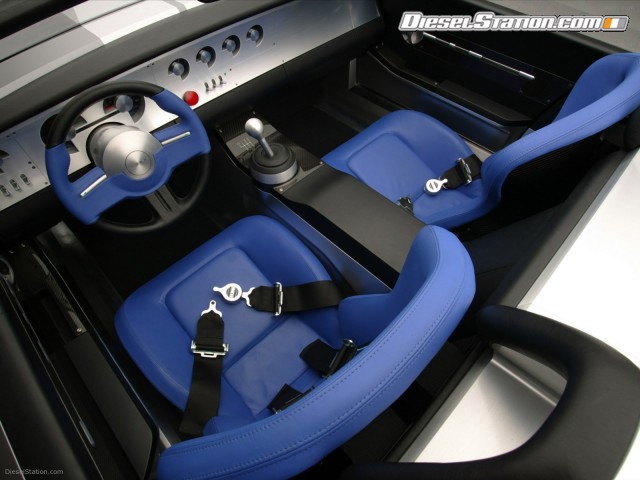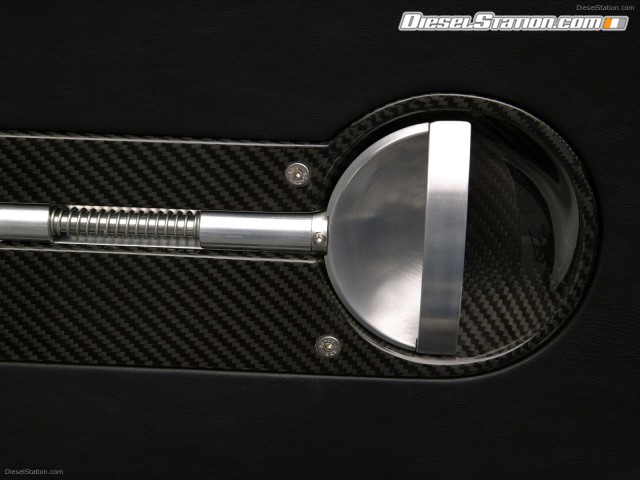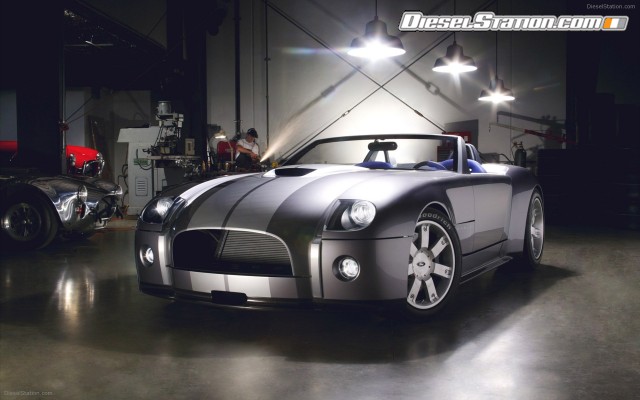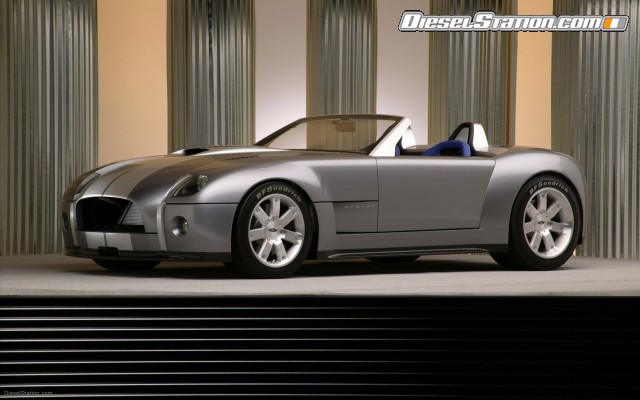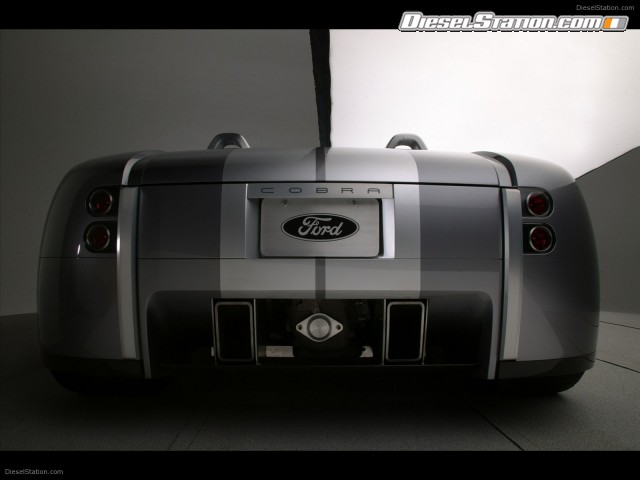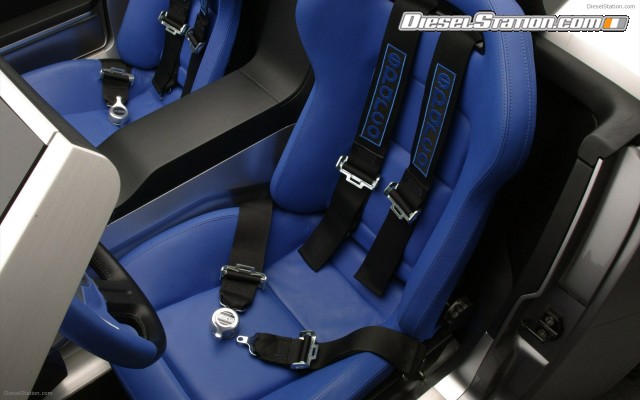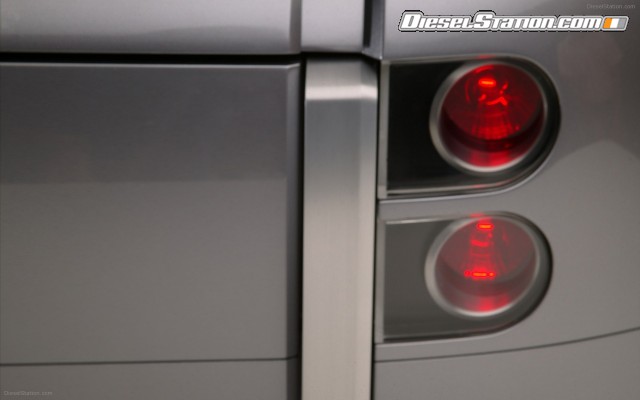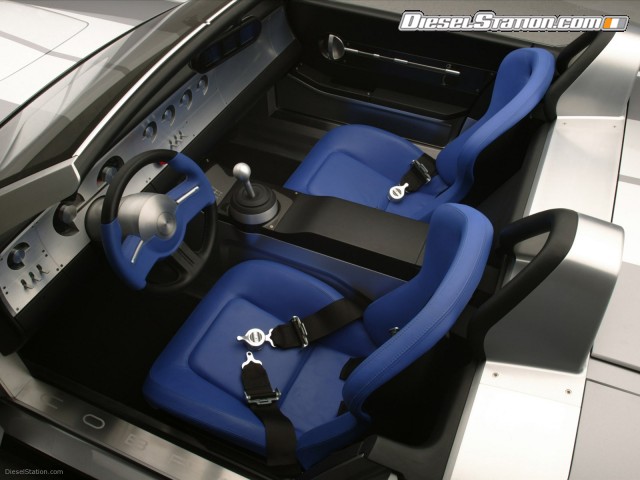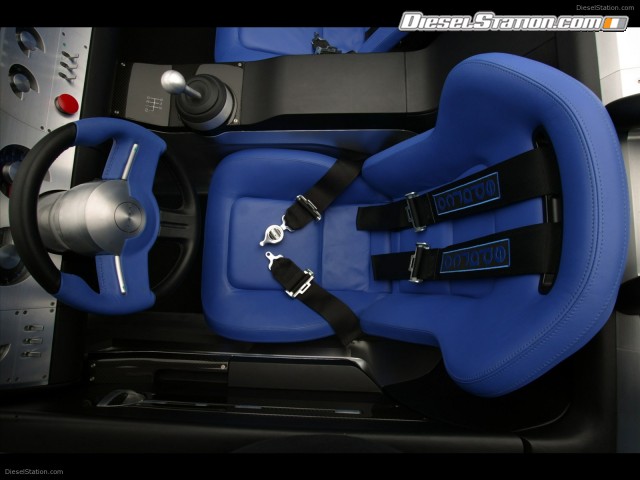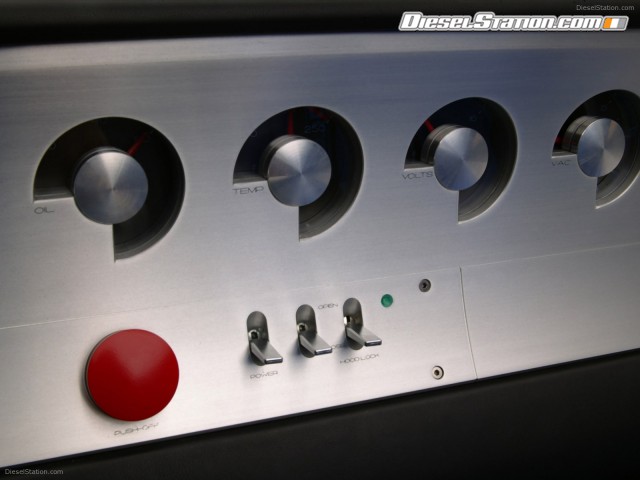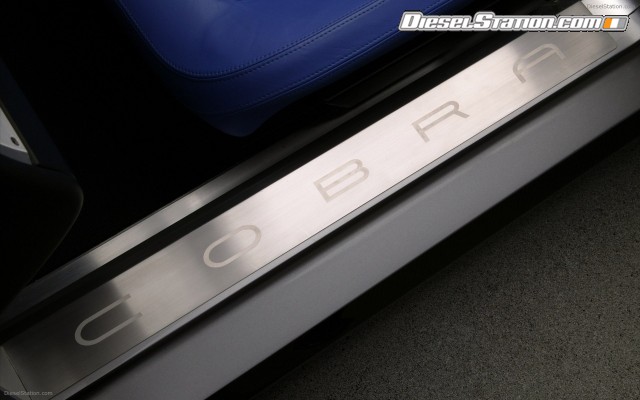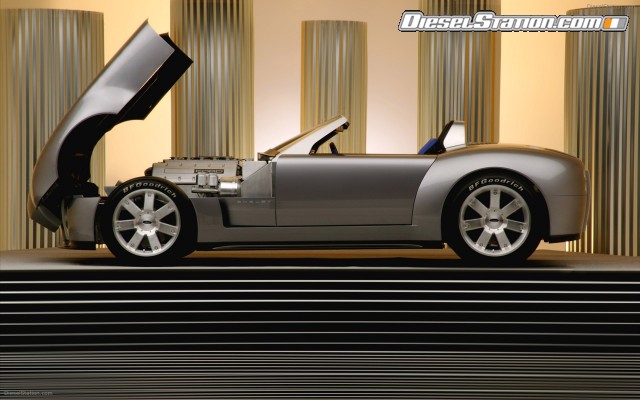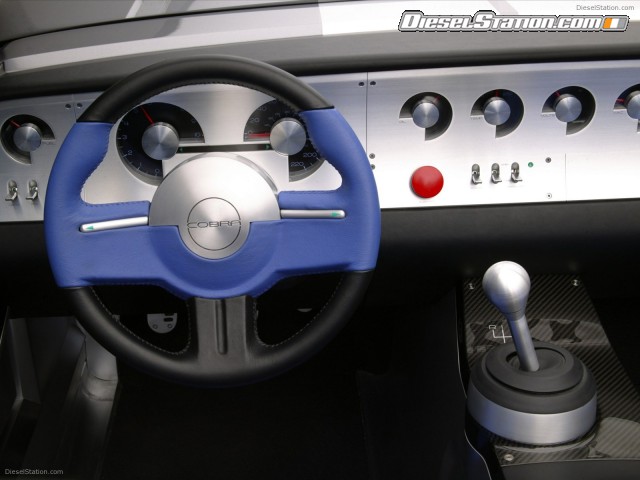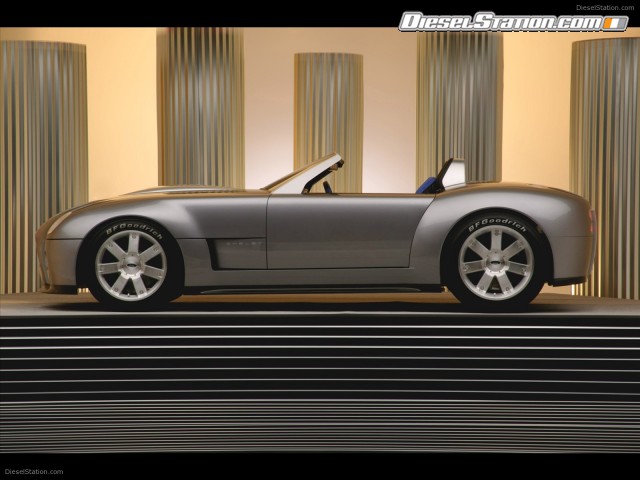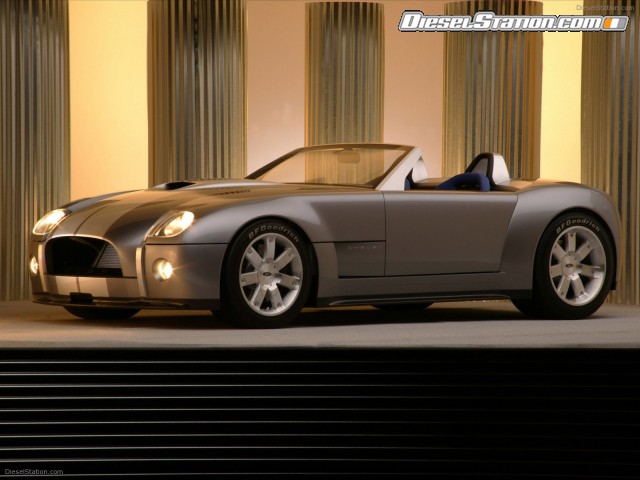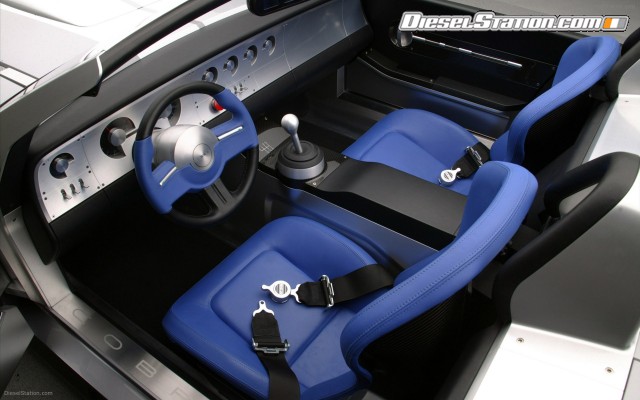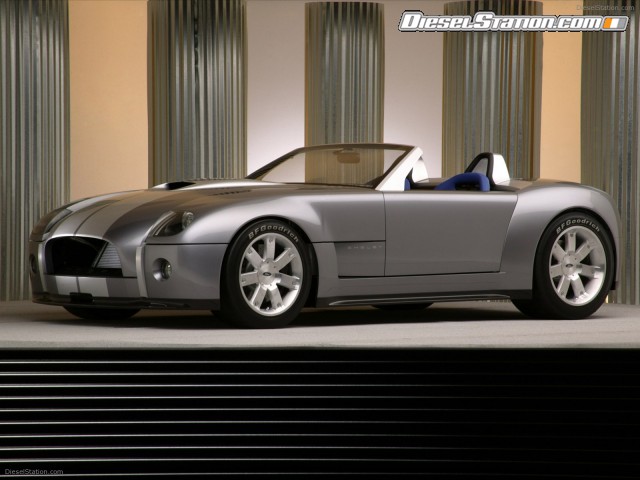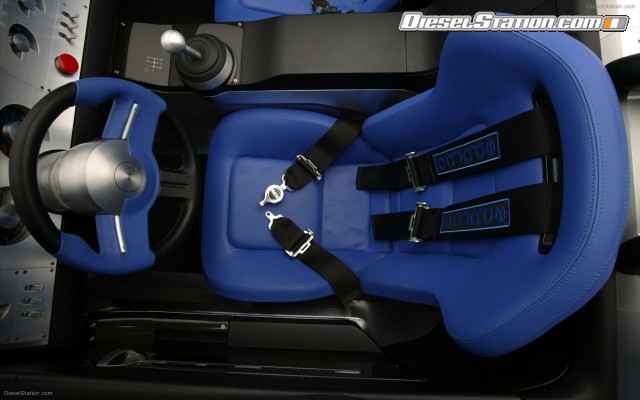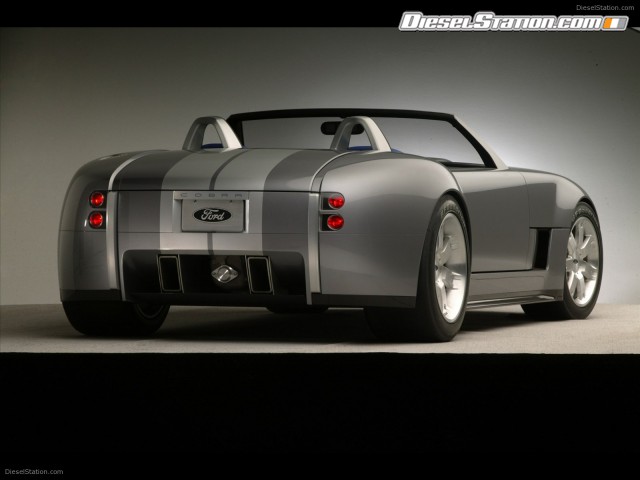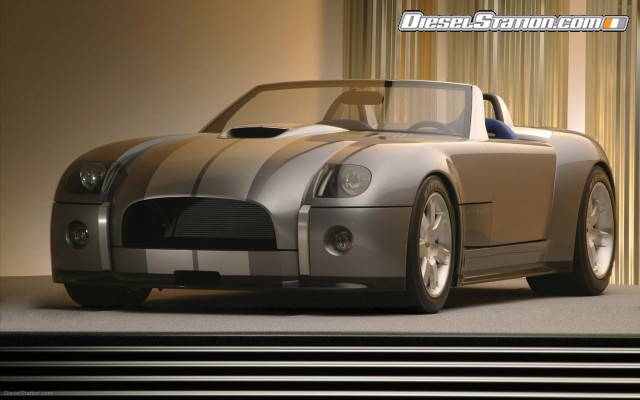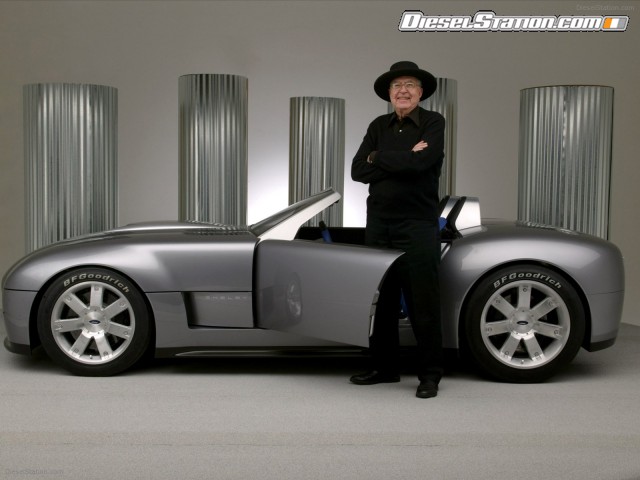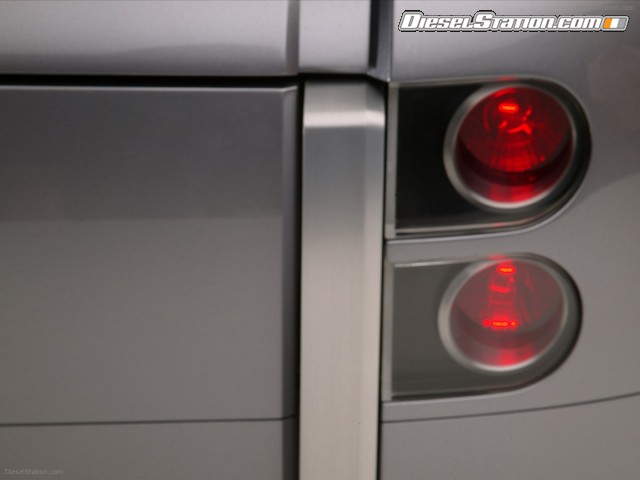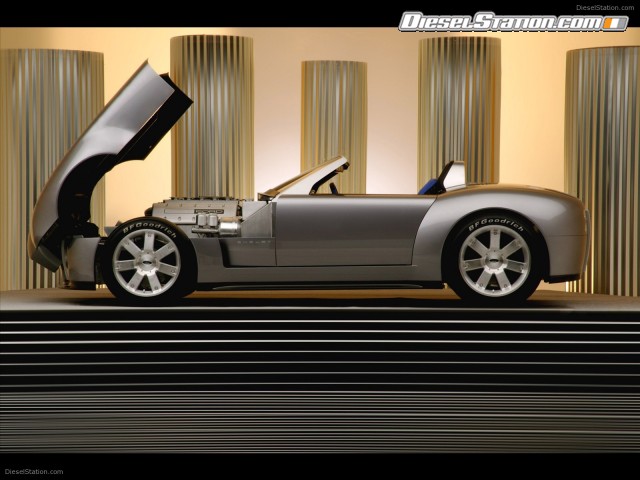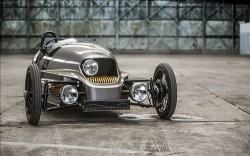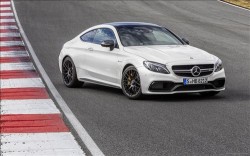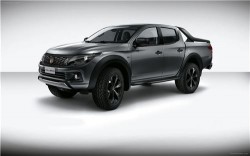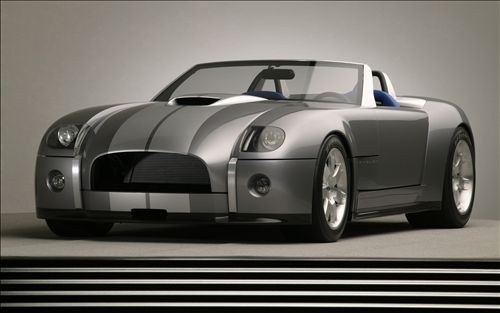Shelby Cobra Concept 2005 was inspired by the biggest, baddest Cobra of all - the renowned 427. Shelby Cobra Concept featured a 0-60mph sprint time of less than 4 seconds with a V10 aluminum engine with 605 HP and 501 ft-lbs of torque without the aid of supercharging or turbocharging.
Ford Celebrates Year of the Car By Developing Legendary Shelby Cobra Concept Vehicle
The new Ford Shelby Cobra concept marks the latest step in an exciting evolution of Ford concept vehicles, with an evocative design, bonafide performance credentials and – thanks to engineering as nimble and efficient as a sports car – a level of feasibility that is already close to production-level.
Like the 2002 Ford GT40 concept, the Ford Shelby Cobra draws on Ford’s emotional and performance roots in a thoroughly modern interpretation that reinforces the company’s product-led momentum. It takes its place with the 2005 Ford Mustang, Five Hundred sedan and Freestyle crossover in the "Year of the Car," the largest new-product barrage in Ford’s history.
"Our lineup of new 2005 cars is all about momentum," said Jim Padilla, executive vice president and president of the Americas, Ford Motor Company. "But the Ford Shelby Cobra concept is all about speed."
The Ford Shelby Cobra’s design reinforces this mission, with minimalist interior and exterior elements that emphasize its performance-oriented function. Cues like the massive grille opening, side vents, low-back seats and bulging wheel arches establish an emotional connection with Carroll Shelby’s original 1960s Cobras, but no dimensions or proportions are copied in this thoroughly modern two-seater.
The Ford Shelby Cobra concept team drew heavily on the Ford GT production car – especially the space frame and suspension – to maximize efficiencies. Although the cars have vastly different characters and different dimensions, smart engineering quickly adapted the rear-mid-engine Ford GT platform to this front-mid-engine application.
Inspired by the biggest, baddest Cobra of all – the renowned 427 – Ford engineers created a new aluminum-block V-10 to power the Ford Shelby Cobra concept. This 6.4-liter engine, adapted from Ford’s MOD family, delivers the rush of raw power associated with that big 1960s V-8 monster – with 605 horsepower and 501 foot-pounds of torque – without the aid of supercharging or turbocharging.
This combination of brute force and thorough engineering has created a rarity in the world of auto shows – a concept car that can actually do, rather than merely promise, zero to 60 in under four seconds, and would easily exceed 100 mph if not electronically limited. With show cars typically limited to a stately 15 mph or so, this fact points at the level of engineering packed into the Ford Shelby Cobra concept – and points to the authenticity that comes from working with Carroll Shelby once again.
"I'm sure the question on everyone’s mind at this point is, ‘Are you going to build a production version?’ The answer is, ‘We'll see.’ If we get the same overwhelming reaction to the Cobra concept as we did to the GT concept, anything is possible," said J Mays, group vice president, Design.
A New Legend is Born
As the saying goes, too much power is almost enough. So thought Carroll Shelby when he shoe-horned a 427-cubic-inch Ford V-8 under the hood of a small British roadster, giving birth to the legendary 427 Cobra.
Four decades later, Ford’s Advanced Product Creation team – an in-house think-tank cum skunk works – explored the idea of applying Shelby’s famous formula to the latest components and architectures Ford has to offer. The result is the Ford Shelby Cobra concept, a radical new roadster, fully engineered for high-speed testing, completed in just five months by a small, tightly focused team of enthusiasts.
This production-feasible roadster has a 427-inspired 605-horsepower, all-aluminum V-10 engine mounted at the front of an advanced aluminum chassis modified from the rear-engine Ford GT.
It weighs slightly more than 3,000 pounds and is about as long as a Mazda Miata. There’s no roof, no side glass, not even a radio. "That’s the formula," said Carroll Shelby. "It’s a massive motor in a tiny, lightweight car."
Highly Evolved Engineering
The Ford Shelby Cobra concept is not just a huge engine with a pair of seats along for the ride. Owing to its front engine and rear transaxle layout, the roadster has nearly perfect weight distribution and a world-class supercar suspension for agility to match its alacrity.
What’s more, this ultimate roadster seats full-size adults without compromise. It actually has more front-seat legroom than a Ford Crown Victoria sedan. This key packaging achievement wouldn’t be necessary on a typical show car – but is absolutely essential to demonstrate production feasibility.
"We put together the mechanicals of a world-class supercar in a compact roadster package that can seat full-size adults," said Manfred Rumpel, manager, Advanced Product Creation. "And we did it in just five months on a budget smaller than that for many nonfunctional, nonengineered show cars."
The secret to the team’s success was Ford’s stepped-up efforts toward commonality, speed and the expertise of a team of engineers who had previously completed the all-new Ford GT in just 15 months.
"With the Ford GT, we now have a collection of supercar components," said Chris Theodore, vice president, Advanced Product Creation. "We also have a team of engineers who know how to work fast to get the job done.
"It can take a year to build a concept car that doesn’t even run or is speed-limited to 15 mph," Theodore said. "But in five months, we built one that will do 100 mph on the racetrack today."
Evocative, Modern Design
Honoring the Cobra heritage is a fully modern architecture with subtle styling cues that hint at the legendary Cobras of the 1960s.
"What we’re trying to do is not just take the audience somewhere they haven’t been in a very long time, but take them somewhere they’ve never been – and there’s a lot of magic in trying to do that," Mays said.
First and foremost, the Ford Shelby Cobra concept is a performance car, and every surface and line has its roots in the car’s engineering mettle.
"The powertrain, the space frame and the suspension were all key elements in the design, although for the most part, you don’t see them," said Richard Hutting, chief designer. "These established our proportions and naturally led to a race-bred shape that evokes the original Shelby Cobra, without sharing a single dimension or proportion. Just like its underpinnings, this car is thoroughly modern in every way."
While the design is clearly 21st century, the roadster is intentionally familiar. Key details – the dominant grille opening, hood scoop, vertical bumper bars and stacked lamps front and rear – establish the historical connection to Shelby’s original creation.
"When you’re setting out to tell a story about an automobile in a fresh, contemporary way, you’re not actually looking to create beauty – you’re looking to create meaning," said Mays. "We have interpreted that raw, aggressive Cobra attitude in a very modern way."
The Ford Shelby Cobra concept completes the trilogy of Ford’s greatest performance vehicles: the GT40, Mustang and Shelby Cobra. It heralds a new era of speed from Ford, the company that best knows and most loves performance cars.
Ford And Shelby: Partners At The Finish Line For More Than Four Decades
Carroll Shelby’s role in the program was more than that of a spiritual leader. "As soon as we decided to build the Cobra, J Mays and I went to talk with him," Theodore said. "Carroll has been involved every step of the way."
Shelby’s presence at every management review provided authenticity, as well as real contributions to the program. For example, he and Theodore independently hit on the breakthrough idea of the rear transaxle.
It might shock many young racing hopefuls today to learn that Shelby didn’t enter his first automobile race – a quarter-mile drag meet – until he was nearly 30 years of age. What’s no surprise, of course, is that the hot rod Shelby drove to the finish line that day in 1952 was powered by a Ford V-8.
Shelby may have started late, but he was a winner from the beginning. Just two years into Shelby’s driving career, Aston Martin’s racing manager, John Wyer, recruited him to co-drive a DB3 at the Sebring endurance race. Within months, the chicken farmer from Texas was bumping elbows and trading paint with the likes of glamorous grand prix drivers Juan-Manuel Fangio, Phil Hill and Paul Frère. He won Europe’s prestigious 24-hour endurance race at Le Mans in 1959, driving an Aston Martin DBR1 with Roy Salvadori.
Early in 1962, Shelby drove his second Ford-powered race car. It was the first mockup for the Cobra, Shelby’s now-legendary marriage of a lightweight British roadster body with a small-block Ford V-8. By January 1963, he had homologated the car under the FIA’s GT III class rules and was lapping Corvette Stingrays at Riverside Raceway in Southern California.
In January 1965, Ford hired Shelby to lend his expertise to the upstart GT40 campaign. While Ford and Shelby took on Ferrari at Le Mans with the GT40, and won, they continued to fight Corvette at home with the Cobra. Production of the vehicle, which had a 1-ton weight advantage over the Corvette, began in June 1962 and continued through March 1967.
The first 75 Cobras that Shelby built were powered by Ford’s 260-cubic-inch V-8; 51 more had the larger and far more powerful 289.
Shelby first installed the Ford "side-oiler" 427 engine in the Cobra in October 1963, but the combination of this powerful engine and the rear leaf-spring suspension made the car treacherous to drive. Ford helped Shelby completely redesign the chassis, including an all-new coil-spring rear suspension, and by January 1965, Shelby introduced the production 427 Cobra – the car many enthusiasts herald as the ultimate street-legal racer.
"Our original objective was to build a sports car that would outrun Corvette," Shelby said. "I never dreamed it would become the icon that it did."
Ford Shelby Cobra Concept Specifications
|
Vehicle Type |
Open-top V-10 roadster |
|
|
Powertrain and Chassis |
||
|
Chassis construction |
Welded and bonded space frame of cast and extruded aluminum |
|
|
Dimensions (in inches unless otherwise noted) |
||
|
Wheelbase |
100.0 |
|
|
Overall length |
155.4 |
|
|
Overall width |
75.0 |
|
|
Track width, front |
60.6 |
|
|
Track width, rear |
60.4 |
|
|
Front legroom |
45.4 |
|
|
Curb weight |
3,075 pounds (target with production-level bodywork) |
|
|
Engine |
||
|
Type |
6.4L, 90-degree V-10 |
|
|
Configuration |
Aluminum engine block and cylinder heads |
|
|
Redline |
7,500 rpm |
|
|
Valvetrain |
DOHC, 4 valves per cylinder |
|
|
Intake |
Velocity stacks with sliding plate throttles |
|
|
Bore x Stroke |
3.66 x 3.70 in / 93.0 x 94.0 mm |
|
|
Displacement |
390 cu in / 6,392 cc |
|
|
Compression Ratio |
10.8:1 |
|
|
Horsepower |
605 @ 6,750 rpm |
|
|
Torque |
501 lb-ft @ 5,500 rpm |
|
|
Drivetrain |
||
|
Layout |
Mid-front engine, rear transmission, rear-wheel-drive |
|
|
Transmission |
||
|
Type |
Ricardo 6-speed transaxle |
|
|
Gear |
Ratios |
Theoretical top speed at redline |
|
1st |
2.60:1 |
64 mph |
|
2nd |
1.70:1 |
98 mph |
|
3rd |
1.23:1 |
135 mph |
|
4th |
0.95:1 |
175 mph |
|
5th |
0.76:1 |
219 mph |
|
6th |
0.63:1 |
267 mph |
|
Reverse |
3.14:1 |
|
|
Final Drive |
3.36:1 limited slip |
|
|
Suspension |
||
|
Front |
Unequal-length aluminum control arms, coil-over monotube shocks, stabilizer bar |
|
|
Rear |
Unequal-length aluminum control arms, coil-over monotube shocks, stabilizer bar |
|
|
Steering |
||
|
Type |
Rack-and-pinion with power assist |
|
|
Ratio |
17.0:1 |
|
|
Brakes |
||
|
Front |
14.0 x 1.3 in. (355 x 32 mm) Brembo cross-drilled and vented discs, four-piston monoblock calipers |
|
|
Rear |
13.2 x 1.3 in. (335 x 32 mm) Brembo cross-drilled and vented discs, four-piston monoblock calipers |
|
|
Tires and Wheels |
||
|
Front |
P275/40R18 BF Goodrich racing tires on 18 x 10-inch BBS wheels |
|
|
Rear |
P345/35R19 BF Goodrich racing tires on 19 x 13-inch BBS wheels |
|




